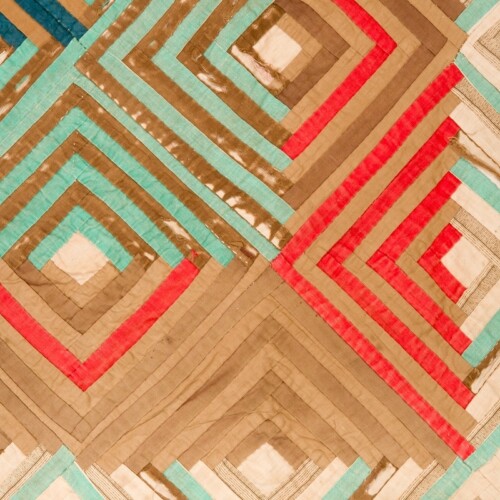Signature quilts, also known as inscribed quilts, are textiles that have been signed by their makers or contain signatures by multiple individuals. These signings can be done in ink, cross stitching, and/or embroidery and have been helpful for researching the genealogy of individuals named in these quilts. Access to genealogical information – tracing family history and lineage – helps to pinpoint the origin or earliest known history of objects; information valuable in institutions such as the Museum, as it helps give voice to forgotten histories and allows audiences to gain broader understanding of specified topics. An excellent example of this quilt type is the following Baltimore Album quilt, an elaborate work, featuring several green and red appliqued designs. Applique is a quilting technique in which fabrics are applied to other textile surfaces by way of sewing.
Various inscribed quilts are known to have been given as gifts or in acts of philanthropy. They are textiles which can be made both with community or alone; while not always apparent, there are cases in which blocks, made by different individuals, are pieced together to make these elaborate quilts. The Baltimore quilt above is assumed to have been gifted as a wedding gift to a bride, however other examples of this quilt type include those that were sent off to soldiers – to provide warmth – in the civil war era.











